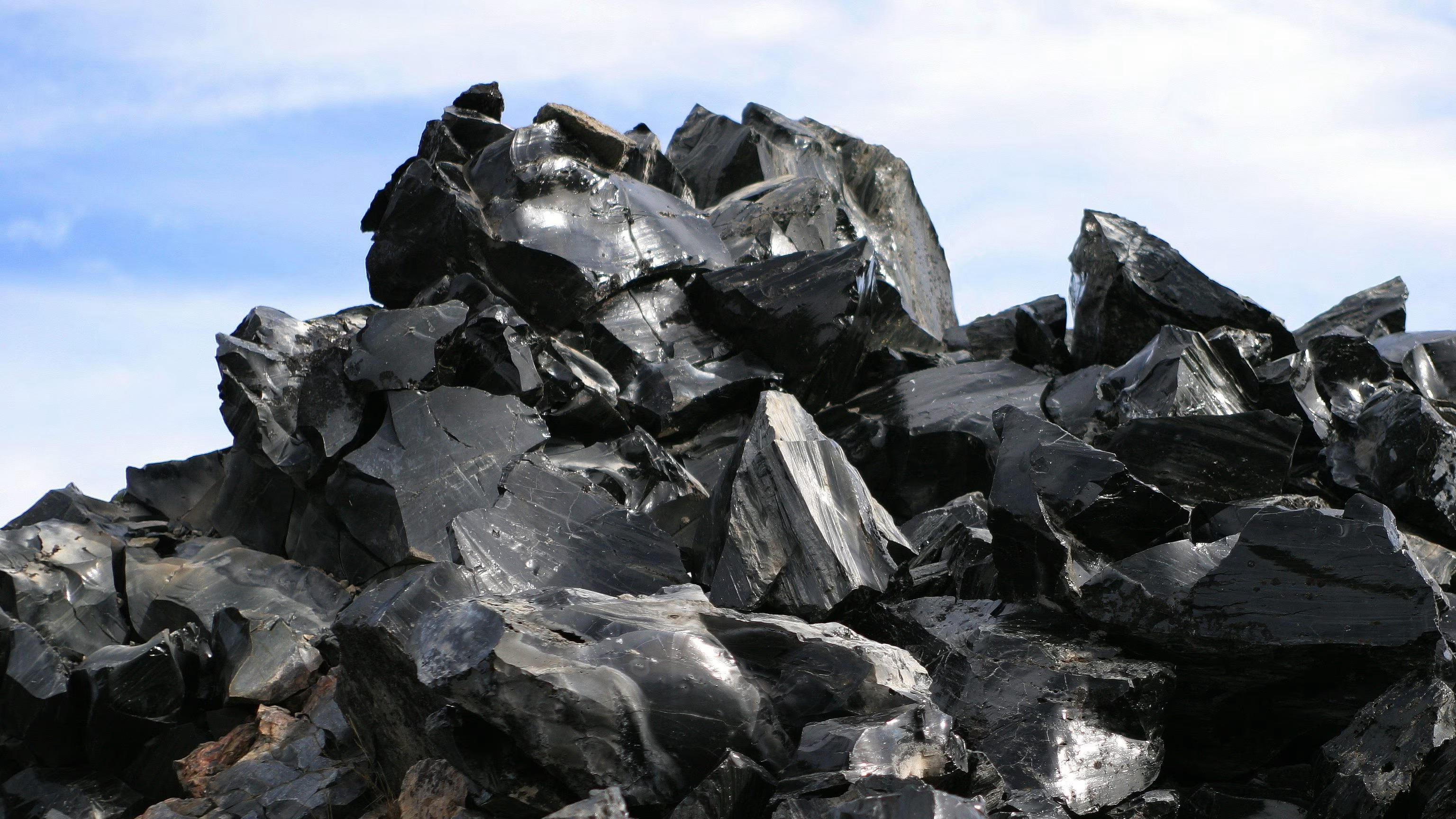Obsidian: The Black Gold Of Prehistory 0 Commentaires

"Sa pedra crobina", literally "the rock as black as the crow" is what they call obsidian in Sardinian, a dark and shiny volcanic glass. Its homogeneity and hardness made it one of the raw materials already known in the Neolithic. Man made sharp tools such as blades or arrowheads, perforators, scrapers and, more rarely, ornamental objects.
Obsidian in Sardinia is found in the territory of Monte Arci, 230 km and almost three hours by car from Gabbiano Azzurro Hotel & Suites, a now extinct volcano from which obsidian was generated millions of years ago following effusions of acid lava. Archaeologists have found obsidian manufactures in over a thousand settlements dating back to between the 6th and 3rd millennium BC.
It has a history of millions of years, the archaeological museums of Sardinia are full of them and, recently, it hit the headlines as the protagonist of the very popular TV series "Game of Thrones", where it was reputed to be the only substance capable of killing fearsome ice zombies called “White Walkers”. In the reality of the living ones, it seems that obsidian has notable beneficial properties for the body and spirit although not scientifically validated.
The Monte Arci’s obsidian, the black stone that was once considered "the black gold of the ancient Sardinians" or "the black stone daughter of volcanoes", was a precious and sought-after commodity who’s first known use dates back to the Neolithic, from 8000 to 2500 BC. Although it is often considered a stone, obsidian is instead a natural volcanic glass, formed following the very rapid cooling of lava.
The ancient Nuragic peoples were the very one who discovered the way of "the black gold" in the Neolithic, preferring this volcanic glass to flint for weapons, arrowheads, cutting tools, but also for scrapers for leather processing. They worked it in "centres" near the obsidian outcrops where archaeological remains testify that they reduced the large blocks of stone (cores) into smaller pieces. The waste from processing, i.e. obsidian splinters and cores, left on site because they were no longer useful, allowed archaeologists to identify these centres.
The Nuragic people traded it with the other peoples of the Mediterranean, because in the Mediterranean the obsidian deposits, in addition to Sardinia, were only found on the islands of Lipari, Palmarola and Pantelleria. From finds in many prehistoric sites, Sardinian obsidian was exported to Corsica, central and northern Italy, Provence, but especially to southern France.
Where does his name come from? The term is attributed to Pliny the Elder (omnipresent in documents regarding Sardinia), writer, naturalist, natural philosopher, military commander and Roman provincial governor. He called it obsidian, lapis obsianus or obsidianus in honour of a certain Obsius or Obsidius, who seems to have been the first to talk about the stone. It is easily recognizable from common rocks because it is very similar to glass, with a dark colour, usually bright black or grey, but sometimes also with shades of green, blue and red.
Much less than the distant past, obsidian is still worked today to make scalpel blades which some surgeons prefer to stainless steel blades. Rock wool is also obtained, a thread-like and glassy material obtained by melting obsidian at 1300 degrees centigrade, used in construction as a thermal, acoustic and fireproof insulator and also as a draining material. And finally, it is used to make jewellery such as "Su Coccu", a sought-after jewel and lucky amulet of the Sardinian tradition.
“Obsidian is a stone of clarity, with the ability to release emotional, physical, and spiritual blockages, drawing out stress and tension and encouraging personal growth.” (cit.)
--Written by Daniela Toti
Share your opinion with us!